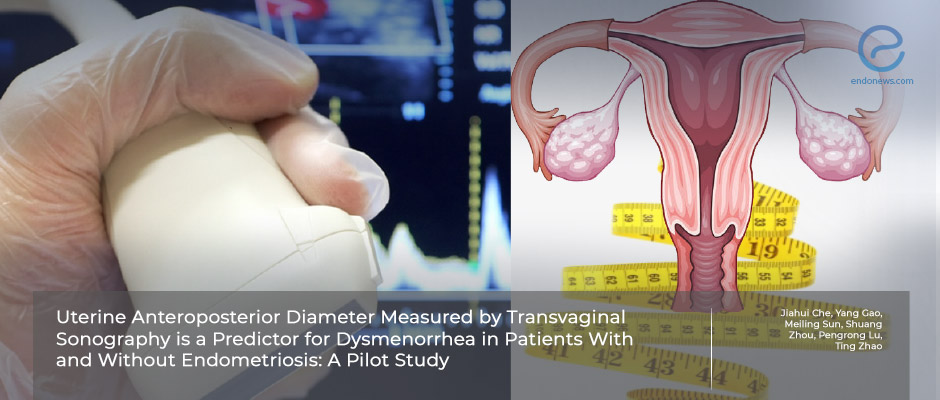The bigger the uterus, the more painful the dysmenorrhea even if you don’t have endometriosis.
Apr 16, 2023
The relation between uterine size and the dysmenorrhea
Key Points
Highlights:
- The anteroposterior diameter of the uterus is related to the degree of dysmenorrhea which represents a possible tendency to adenomyosis even if no ultrasonographic warnings are present.
Importance:
- The study highlights a new insight when examining patients with dysmenorrhea.
What's done here:
- Reproductive-age women who underwent abdominal surgery have been included.
- Demographic data and VAS scales for the menstrual pain intensity of all participants have been questioned.
- Uterine diameters and anteroposterior diameter (AD) were measured at the thickest point by transvaginal ultrasound preoperatively.
- Adenomyosis diagnosis was also given according to ultrasound findings.
- The relation between pain scores, endometriosis and/or adenomyosis diagnosis, and uterine diameters have been calculated statistically.
Key Results:
- Among 220 patients with endometriosis and 233 patients without endometriosis, uterine AD was correlated with the VAS scores.
- The AD value of 39.5 mm was the predictor of dysmenorrhea in both groups and the predictor of adenomyosis in endometriotic patients.
- Uterine AD was independently correlated with the diagnosis of adenomyosis under TVS in patients with and without endometriosis.
- A significant correlation was also found between higher AD and rectovaginal pouch obliteration in patients with endometriosis and even with patients with adenomyosis without endometriosis.
Limitations:
- The number of patients included should be higher to set up prediction models.
- The diagnosis of adenomyosis was made with ultrasound imaging, but not histologically.
- The patients with adenomyosis but no endometriosis might also have peritoneal endometriosis which might have been missed.
Lay Summary
The literature finds no correlation between ultrasound or perioperative findings and pain intensity. Thus, a tool to predict pain intensity will ease the choice for proper treatments and follow-ups.
In the study led by Dr. Zhao et al., the ultrasonographic measurements of the uterus have been compared with operative findings and pain (VAS) scales of women with and without endometriosis. Reproductive-age women who applied for abdominal surgery have been included.
Demographic data and VAS scales for the menstrual pain intensity of all participants have been questioned. Uterine diameters have been measured by transvaginal ultrasound preoperatively. The uterine longitudinal diameter was measured from the cervical internal os to the fundus in the sagittal plane; the transverse diameter was measured by the maximum diameter from the left side of the uterine corpus to the right side in the transverse plane; anteroposterior diameter (AD) was measured from the anterior to the posterior serosa at the thickest point perpendicular to the endometrial line in the sagittal plane. The diagnosis of adenomyosis was also given according to ultrasound findings. The relation between pain scores, endometriosis and/or adenomyosis diagnosis, and uterine diameters have been calculated by regression analysis.
Among a total of 220 patients with endometriosis and 233 patients without endometriosis, uterine AD was correlated with the VAS scores. The AD value of 39.5 mm was the predictor of dysmenorrhea in both groups and the predictor of adenomyosis in endometriotic patients. Furthermore, uterine AD was independently correlated with the diagnosis of adenomyosis under TVS in patients with and without endometriosis. There was a significant correlation between higher AD and rectovaginal pouch obliteration in patients with endometriosis and even with patients with adenomyosis without endometriosis.
Whether the initiation of adenomyosis and endometriosis diagnosis raises some question marks, the technique still seems promising as it is easily applicable.
Research Source: https://pubmed.ncbi.nlm.nih.gov/36585745/
ultrasound measurements dysmenorhae

